In this article:
Chapped lips is a common complaint during the winter and harsh summer months. An unhealthy lifestyle and extreme weather can render the lips dry and chapped, sometimes causing peeling. Because the skin on the lips is quite sensitive, it is important to take measures to maintain its healthy, soft, and hydrated condition.
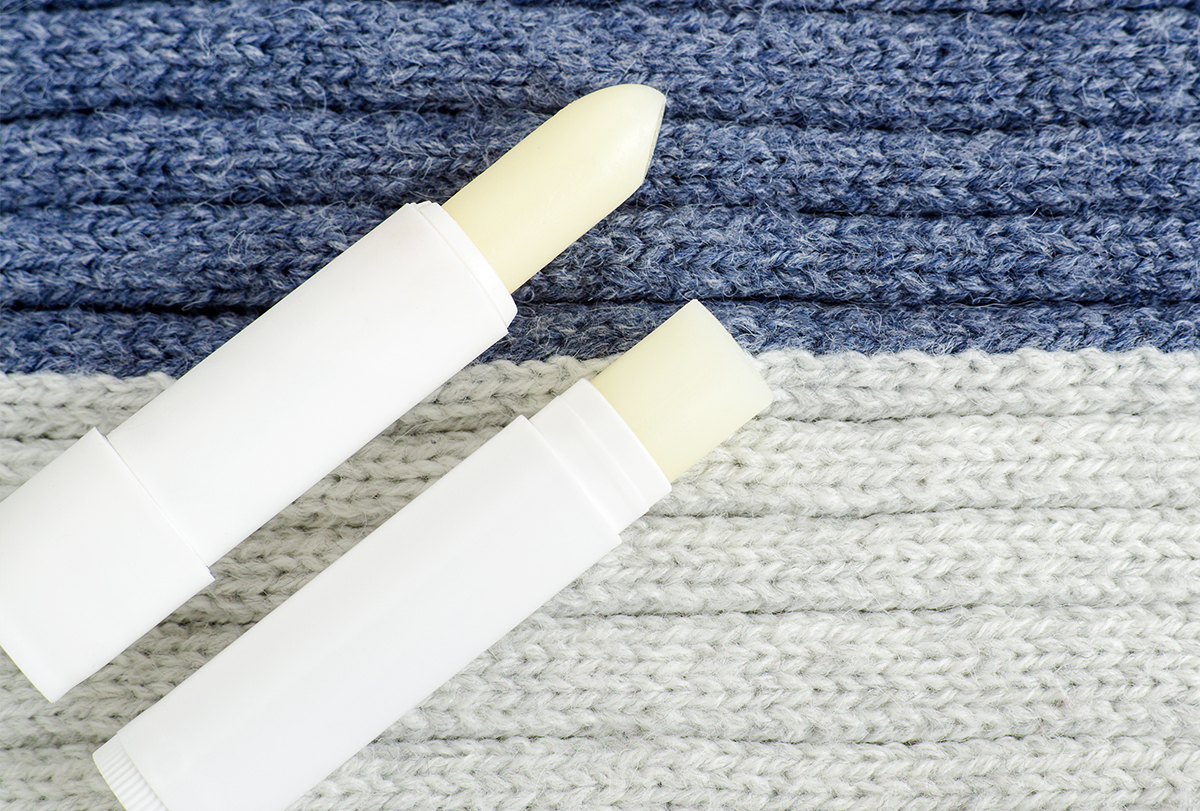
Regular use of lip balms is an efficient way to take care of your pout. Although there are various commercially available lip balms, they often contain paraffin or petroleum, which may be contaminated. They may also include multiple chemicals.
Treating your lips to homemade, all-natural lip balms is an excellent and cost-effective alternative. Almond oil, beeswax, coconut oil, and honey are some common ingredients you can use for your DIY lip balm.
Know the Ingredients
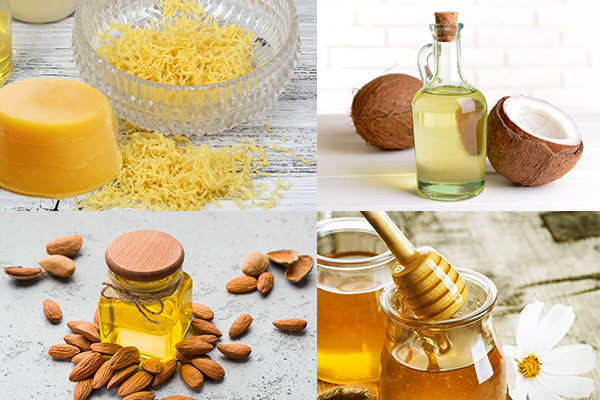
Here are the ingredients you can use to make a nourishing lip balm at home.
1. Beeswax
Beeswax, produced by the abdominal glands of bees, is extracted from honeycombs and is widely used in the pharmacy and cosmetology industries.
It is commonly employed as an emulsifier and stiffener to help provide elasticity, plasticity, and skin adhesiveness to products such as sticks, lipsticks, and creams. It helps lubricate and soften the skin and reduces transepidermal water loss. (1)(2)
Note: Generally, the topical application of beeswax in regular amounts is found to be safe. However, a mixture of beeswax, olive oil-propolis extract, and honey was reported to produce a burning sensation. The reaction is suspected to be a result of the other products rather than the beeswax.
2. Coconut oil
Coconut oil has a high content of fatty acids that can help moisturize, soften, and nourish your skin, especially your lips. Its antioxidant properties can prevent damage.
Studies show that coconut oil is effective in improving dry skin as it hydrates the skin and stimulates an increase in skin surface lipid levels in ways similar to mineral oils. (3)(4)
Note: The topical application of coconut oil is typically found to be safe for all ages. However, due to a lack of studies on its safety for pregnant women, coconut oil should be used in moderation by expecting mothers.
3. Honey
Honey is often used as a dermatological relief agent due to its antimicrobial, pH regulating, humectant, soothing, emollient, antiaging, and conditioning properties.
It is used in various cosmetic products such as tonic lotions, cleansing milk, lip ointments, aftersun, hydrating creams, shampoos, and conditioners. (5)(6)
Note: While honey is considered to be safe for topical use, applying it to wounds can result in stinging, pain, and burning. Avoid its use if you are allergic to it.
4. Almond oil
Almond oil, obtained from Oleum amygdalae, contains sclerosant and emollient properties, which can help achieve an even skin tone and complexion. (7)
Disclaimer: As your facial skin is extremely thin and delicate, it may be easily irritated by a new topical ingredient. To rule out any adverse skin reactions such as burns and rashes, first, perform a patch test of the lip balm on the underside of your arm. If irritation occurs, avoid its use.
Needless to say, people who are allergic to any of the ingredients in the remedy should not use it. People with sensitive skin are advised to take special precautions before trying out any topical remedy.
How to Make a Homemade Lip Balm
Here is a recipe for a DIY homemade lip balm, a single batch of which can fill 4–5 small lip balm containers.
Ingredients:
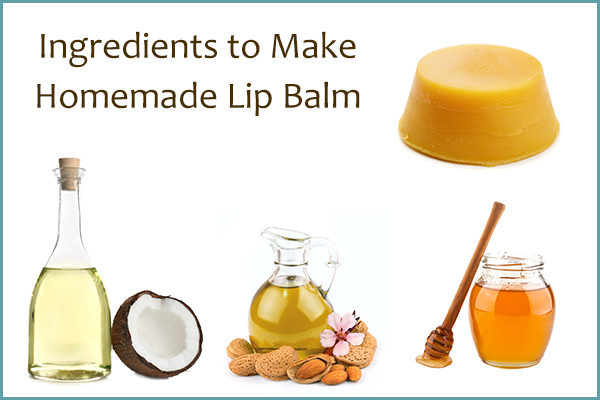
- ½ ounce bar of beeswax
- 2 tbsp extra-virgin coconut oil
- 1½ tbsp almond oil
- 1 tbsp raw honey
- Sterile lip balm tubes or containers
Directions:
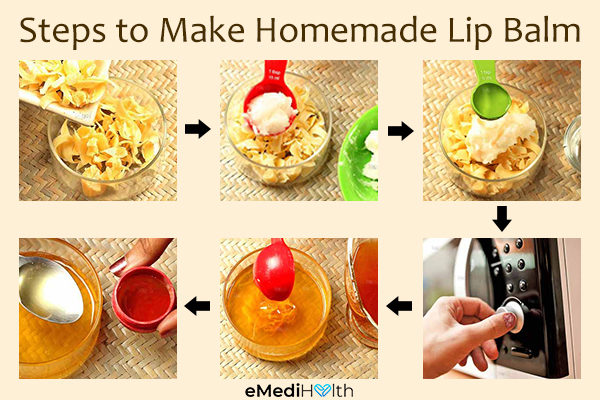
- Use a peeler or grater to shred the beeswax into small pieces and transfer it into a clean bowl.
- Add coconut oil to the beeswax, ideally in a 1:2 beeswax to coconut oil ratio.
- Add almond oil to the bowl and mix.
- Melt the ingredients in the microwave or double boiler.
- Add honey to the melted ingredients.
- Pour the mixture into lip balm containers while it is still warm and allow it to cool down and harden.
- Keep the lip balms in a cool, dry place (can be stored for several months).
Tips
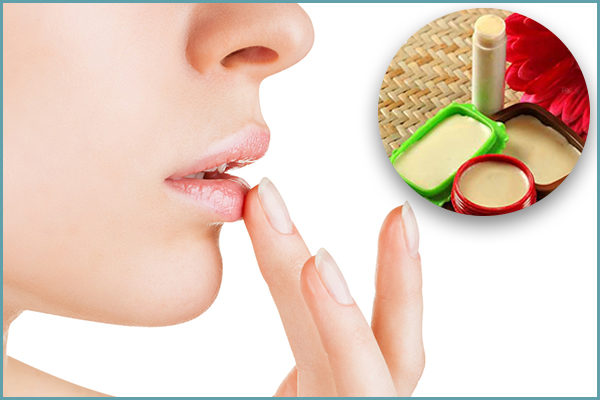
- The quantities of beeswax and coconut oil differ depending on whether the lip balms are stored in containers or tubes. For lip balms in containers, use more coconut oil to obtain a soft consistency. For lip balms in tubes, use more beeswax.
- You may use a double boiler to melt the beeswax. For this, fill up half a pan with water and take it to a boil. Take the beeswax in a bowl and place it on the boiling water. Simmer on low heat and occasionally stir until the wax has melted.
- For melting the wax in a microwave, put it in moderate heat for 30 seconds to 1 minute.
- Refrain from covering the beeswax while melting it, since condensation can alter the texture of the lip balm.
- Use a dropper to avoid spillage when transferring the lip balm into a tube.
- You can add flavor and color to the lip balm by adding ½ tsp of cocoa, alkanet, or beetroot powder, provided you are not allergic to them.
- Use the lip balm multiple times a day as the ingredients may be readily absorbed by your skin, as opposed to commercial lip balms. Doing so also provides proper nourishment to the lips.
Final Word
Because a plethora of lip balms are commercially available, you may find it needless to make one at home.
However, it is important to consider the various benefits that come with a homemade natural lip balm. It is not only devoid of chemicals and impurities but also gives you the freedom to use the ingredients of your choice.
Additionally, homemade lip balms are highly cost-effective in comparison to the commercial ones. Natural lip balms leave your lips nourished, hydrated, healthy, and fresh.
- Was this article helpful?
- YES, THANKS!NOT REALLY


